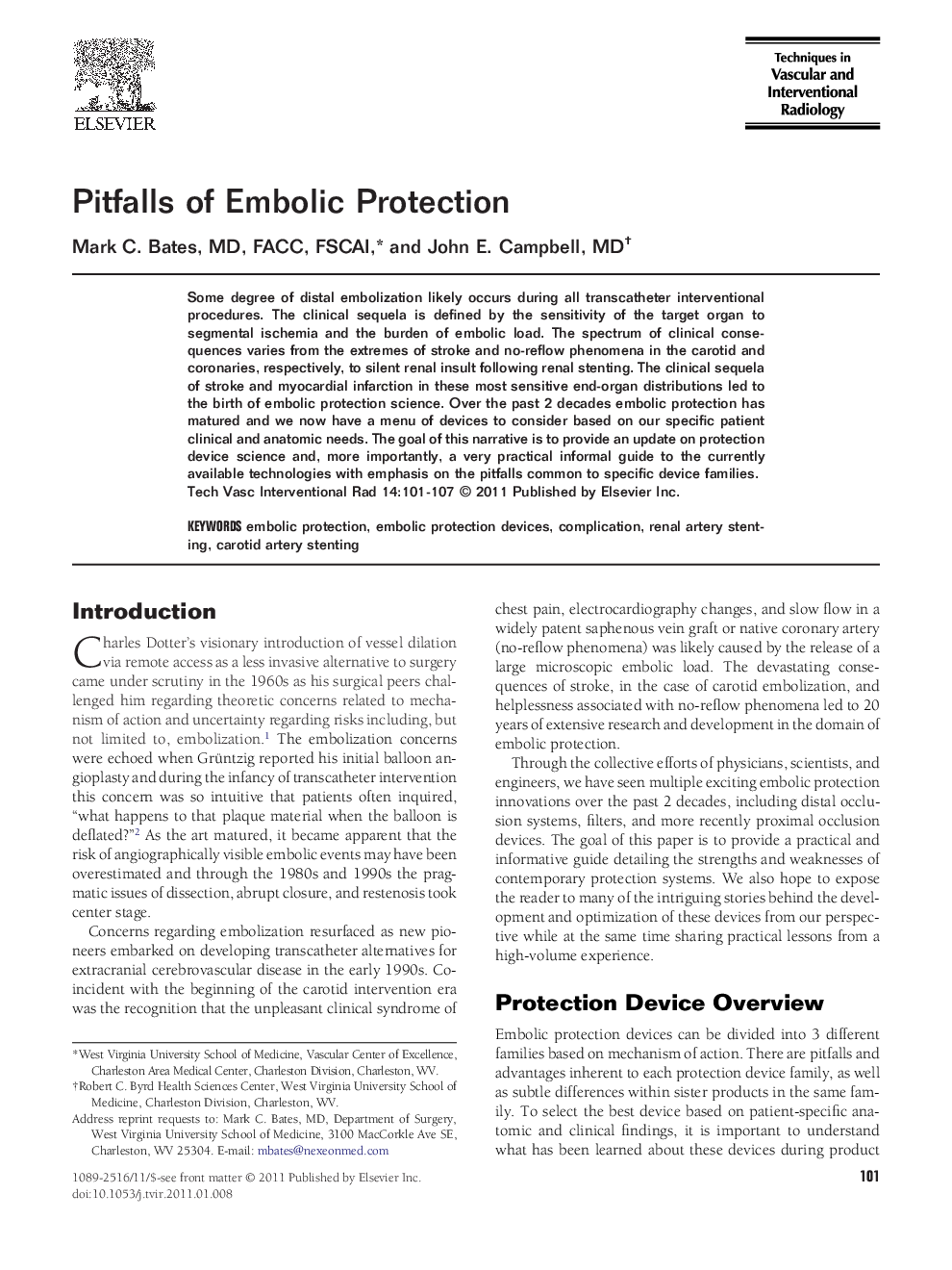| Article ID | Journal | Published Year | Pages | File Type |
|---|---|---|---|---|
| 4251862 | Techniques in Vascular and Interventional Radiology | 2011 | 7 Pages |
Some degree of distal embolization likely occurs during all transcatheter interventional procedures. The clinical sequela is defined by the sensitivity of the target organ to segmental ischemia and the burden of embolic load. The spectrum of clinical consequences varies from the extremes of stroke and no-reflow phenomena in the carotid and coronaries, respectively, to silent renal insult following renal stenting. The clinical sequela of stroke and myocardial infarction in these most sensitive end-organ distributions led to the birth of embolic protection science. Over the past 2 decades embolic protection has matured and we now have a menu of devices to consider based on our specific patient clinical and anatomic needs. The goal of this narrative is to provide an update on protection device science and, more importantly, a very practical informal guide to the currently available technologies with emphasis on the pitfalls common to specific device families.
